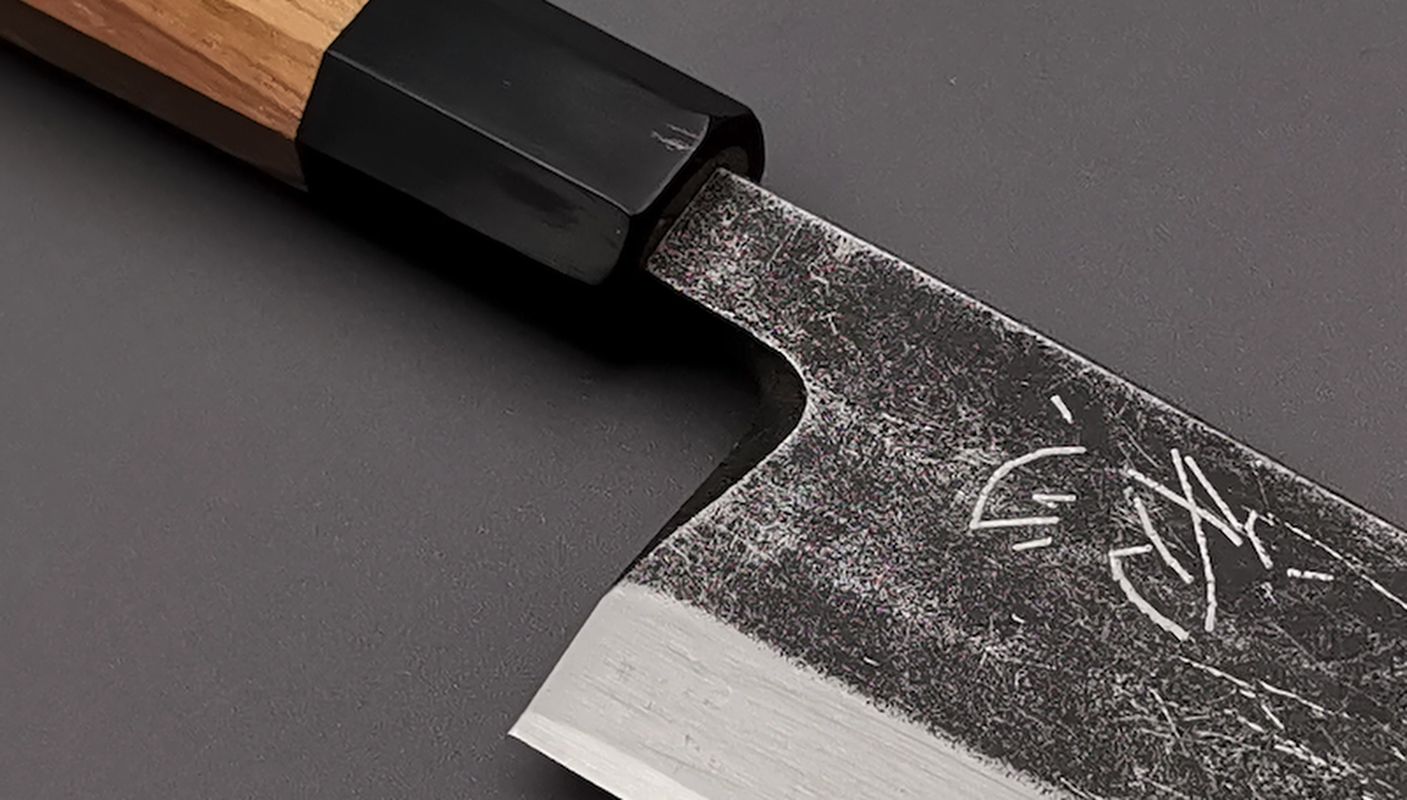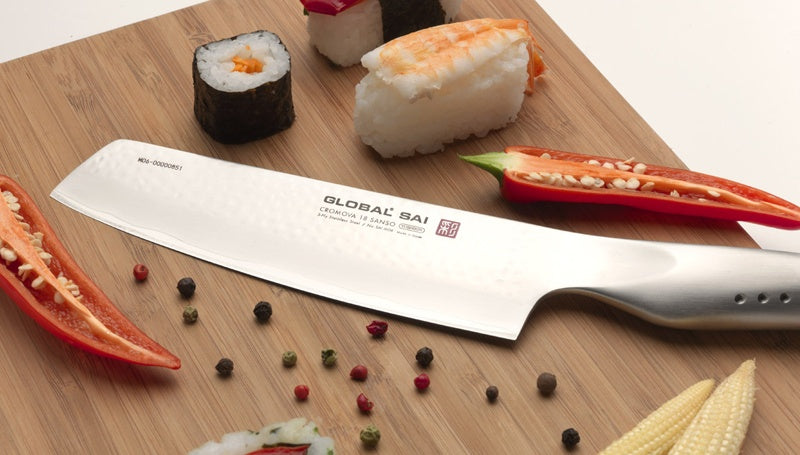FREE SHIPPING ACROSS THE UK
5 STAR CUSTOMER REVIEWS ⭐️⭐️⭐️⭐️⭐️
SHARPNESS GUARANTEED
FREE SHIPPING ACROSS THE UK
5 STAR CUSTOMER REVIEWS ⭐️⭐️⭐️⭐️⭐️
SHARPNESS GUARANTEED
Add description, images, menus and links to your mega menu
A column with no settings can be used as a spacer
Link to your collections, sales and even external links
Add up to five columns
Add description, images, menus and links to your mega menu
A column with no settings can be used as a spacer
Link to your collections, sales and even external links
Add up to five columns
Bevel Profiles in Knife Sharpening
August 04, 2023 5 min read

Here at Knife Sharp we live and breathe all things knife related. As such we obsess over the details that make the process of knife sharpening play a crucial role in maintaining the performance and longevity of knives. However, one aspect that remains a mystery to many is the significance of bevel profiles in knife sharpening and how it affects the performance of difference tyres of knives.
In this fantastic guest blog post written by our friends at Choppn Knives, we aim to unveil the secrets of bevel profiles, providing valuable insights for knife enthusiasts like you and us.
Understanding Bevel Profiles
A bevel profile refers to the shape and geometry of the cutting edge of a knife. It plays a fundamental role in the sharpening process and determines the blade's cutting performance. There are two primary components of a bevel profile: the primary bevel and the secondary bevel.
- The primary bevel is the large, flat portion of the blade that extends from the cutting edge to the spine. It sets the foundation for the overall shape of the bevel profile
- The secondary bevel, or edge bevel, is the narrow strip along the cutting edge that tapers to a fine point. It is the part that comes into direct contact with the material being cut.
Different types of bevel profiles exist, each with its characteristics. Let's explore a few common ones:
Flat Bevel Profile
The flat bevel profile is characterised by a straight, flat secondary bevel that extends from the cutting edge to the spine. This profile offers excellent stability and durability, making it suitable for heavy-duty tasks. It provides a robust cutting edge but sacrifices some slicing ability.
Convex Bevel Profile
In a convex bevel profile, the secondary bevel curves outward, creating a convex shape. This profile enhances slicing ability and improves food release, making it ideal for culinary applications. The convex shape adds strength to the cutting edge while reducing resistance during slicing.
Hollow Bevel Profile
The hollow bevel profile features a concave curvature on the secondary bevel. This profile is often seen in straight razors and some specialty knives. The concave shape creates a keen cutting edge, facilitating precise and effortless cutting. However, it requires careful maintenance and can be more delicate than other profiles.
Several factors influence the choice of bevel profile for a knife:
Knife Usage and Intended Tasks
The knife's intended use is a significant consideration when selecting a bevel profile. Knives used for heavy chopping or outdoor activities benefit from a robust and durable bevel profile, such as a flat profile. Conversely, knives used primarily for slicing tasks, like kitchen knives, can benefit from profiles prioritising slicing ability, such as the convex profile.
Blade Thickness and Material
The thickness and composition of the blade impact the choice of bevel profile. Thicker blades perform better with flat or convex profiles, as they provide more stability. Thinner blades, conversely, can benefit from hollow or convex profiles, which enhance cutting performance.
User Preference and Skill Level
User preference and skill level also play a role in selecting a bevel profile. Some individuals may prefer the stability and durability of a flat profile, while others may prioritize the slicing ability of a convex profile. Additionally, certain profiles may require more skill and experience to maintain and sharpen effectively.
The Science Behind Bevel Profiles
The choice of bevel profile involves scientific principles that affect cutting performance and knife behavior. Let's explore some of these key aspects:
Angle Selection and Cutting Performance
The angle at which the bevel is sharpened influences cutting performance. A lower bevel angle, such as 15 degrees, produces a sharper edge but may sacrifice durability. Conversely, a higher bevel angle, such as 25 degrees, enhances durability but may reduce slicing ability. The angle choice depends on the knife's intended use and the balance between sharpness and edge retention desired.
Bevel Width and Sharpness vs. Durability
The width of the bevel affects sharpness and durability. A narrower bevel produces a sharper cutting edge but can be more delicate and prone to damage. A wider bevel provides increased durability but sacrifices sharpness. Finding the optimal balance between sharpness and durability depends on the knife and its intended use.
Bevel Profile and Slicing Ability
The shape of the bevel profile has a direct impact on slicing ability. Profiles with a convex shape excel in slicing tasks as they reduce friction and drag. The convex curvature allows the blade to glide through food effortlessly. On the other hand, flat profiles provide stability but may require more force during slicing.
Bevel Profile and Knife Stability
The choice of bevel profile affects the stability and control of the knife during use. A flat profile offers excellent stability, making it suitable for heavy chopping tasks requiring a strong cutting edge. Convex profiles enhance manoeuvrability and control, particularly during slicing motions. The hollow profile provides exceptional precision but requires careful handling to maintain stability.
Achieving Different Bevel Profiles
To achieve different bevel profiles, various sharpening methods are available. Let's explore a few commonly used techniques:
Whetstone Sharpening
Whetstone sharpening involves manually sharpening the blade against a sharpening stone. This method allows precise control over the bevel profile and is favoured by many knife enthusiasts and us at Knife Sharp! Different bevel profiles can be achieved by carefully adjusting the angle and pressure.
Honing Rod Sharpening
Honing rods, or sharpening steels, are tools used to maintain the existing bevel profile and restore the edge between sharpenings. While honing rods are not typically used to change the bevel profile, they are vital in keeping the edge aligned and in optimal condition.
Guided Sharpening Systems
Guided sharpening systems utilise a set angle guide or jig to maintain a consistent bevel angle throughout the sharpening process. These systems provide stability and ease of use, making them suitable for beginners and experienced sharpeners. They offer a reliable way to achieve and maintain specific bevel profiles.
Practical Considerations for Bevel Profiles
Once you have established your desired bevel profile, several practical considerations come into play:
Maintenance and Upkeep of Bevel Profiles
Regular maintenance is essential to preserve the bevel profile and ensure optimal cutting performance. This includes periodic sharpening, honing, and proper storage. Maintaining the bevel profile helps retain the knife's functionality and extends its lifespan.
Repairing and Restoring Bevel Profiles
Accidents or wear over time may result in damage to the bevel profile. In such cases, repairing or restoring the profile becomes necessary. This process involves reshaping the damaged area to restore the desired bevel profile using appropriate sharpening techniques.
Adjusting Bevel Profiles Based on Changing Needs
As your needs and preferences evolve, you may need to adjust the bevel profile of your knives. This adjustment could involve changing the bevel angle and width or transitioning to a different profile altogether. You can adapt the bevel profile to suit your requirements with the right knowledge and tools.
Tips for Maximising the Performance of Different Bevel Profiles
To optimise the performance of different bevel profiles, consider the following tips:
- Keep your knives clean and dry to prevent corrosion and maintain the integrity of the bevel profile.
- Regularly inspect the cutting edge for any signs of damage or dullness and address them promptly.
- Use appropriate cutting techniques for each bevel profile, leveraging the unique strengths of the profile.
- Follow proper sharpening techniques and maintain consistent angles to achieve accurate and desired bevel profiles.
Summary
Bevel profiles are a critical component of knife sharpening, influencing cutting performance, durability, and control. Understanding the secrets behind bevel profiles allows you to make informed choices when sharpening and maintaining your knives. Experimenting with different profiles and techniques will enable you to discover the perfect balance for your needs. Embrace the world of bevel profiles, and unlock the true potential of your knives.
To experience the expertise of professional knife sharpening services and achieve optimal bevel profiles for your knives, order your Knife Sharpening & Repair Service today.
Stay Sharp!
Also in The 'Sharp' Blog

Now Accepting Klarna & USDC Stablecoin
December 16, 2025 2 min read
At Knife Sharp, we’re always looking for ways to make your experience with us smoother, faster, and more flexible. That’s why we’re excited to announce that we now accept both Klarna and USDC stablecoin as payment methods...

Now Offering Delivery via Royal Mail
September 10, 2025 2 min read
At Knife Sharp, we’re always looking for ways to make life easier (and sharper!) for our customers, we are very proud to say that we now offer delivery via Royal Mail, using the tracked and insured, next day delivery service, Royal Mail Tracked 24®...

Identifying fake & counterfeit Global knives
May 01, 2024 3 min read
Here at Knife Sharp, we sharpen hundreds of Global knives every week. We love them as they are high quality and hold a fantastic sharp edge. However more recently we have been seeing more and more fake Global knives come to us...
Read More
